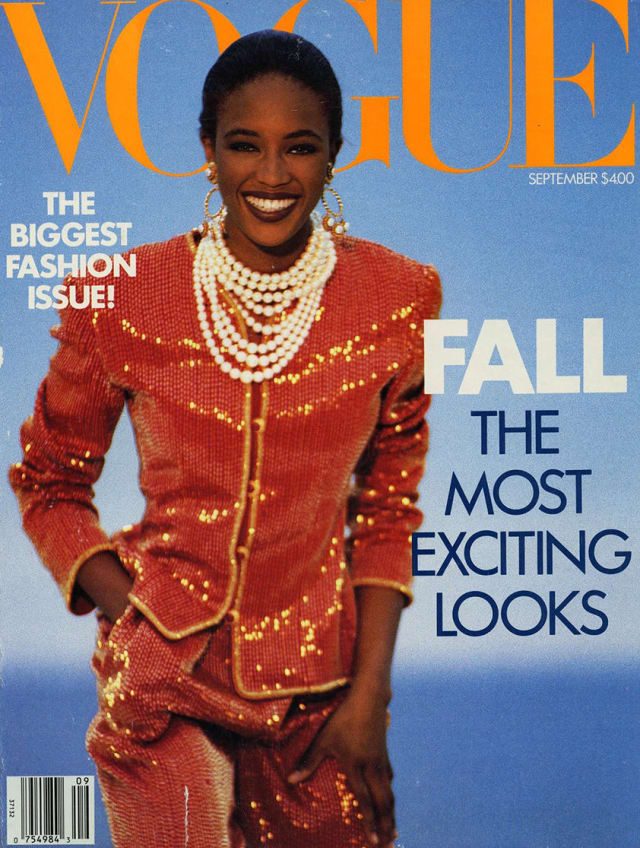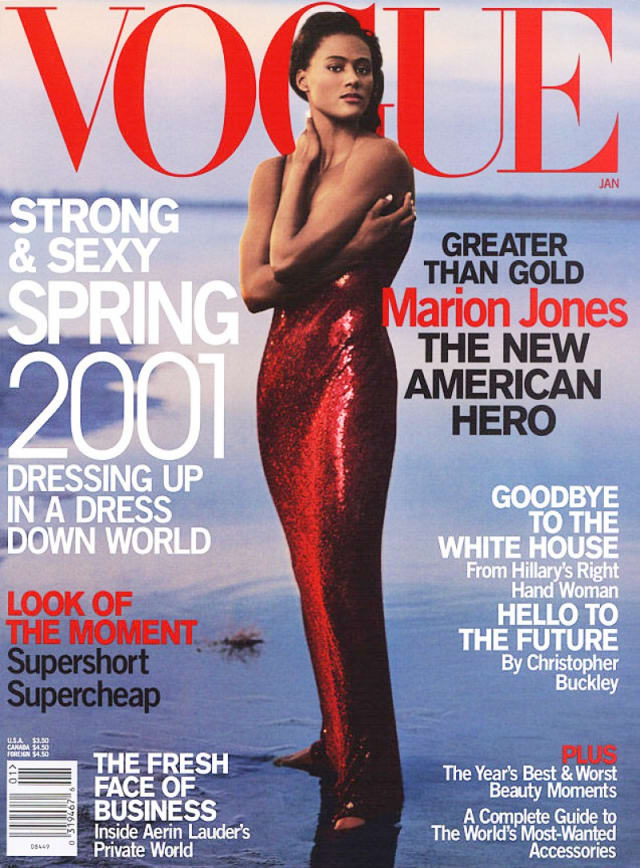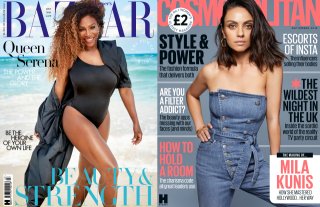"The September Issue Is Dead" From NY Post
https://nypost.com/2018/08/11/the-september-issue-is-dead/
In years gone by, the September issue was the Super Bowl of fashion magazines.
Fat with ads and glossy shoots cherry-picking the best looks of fall — the most important season in the fashion calendar — the annual issue heralded the pinnacle of a magazine’s influence and success.
Days before the issue hit newsstands, usually in early August, executives from Vogue, InStyle, Harper’s Bazaar, Elle, Glamour and W would brag about the thickness of their telephone book-sized glossies. They’d boast of the “thud” the issues made when dropped on a coffee table. The louder the thud, the more powerful the magazine.
Now that thud is more of a whimper.
“The September issue means nothing anymore,” said Sam Shahid, founder of branding, advertising and design agency Shahid & Company. “You used to hold that magazine in your hand. It takes you to a place — that’s what a magazine used to do. Now they are all doing the same thing. There’s no imagination there. It’s just pure product, it’s pleasing the advertiser.”
Shahid says a lack of funds at publishers, due to a decline in print circulation and ad revenue in the digital age, has led to a crazy scramble to attract any kind of buzz or revenue.
“There’s a desperation right now with print,” he added. “The power magazines used to have is no longer there. Celebrities are controlling fashion.”
Take Vogue, for example. Helmed by iconic editrix Anna Wintour since 1988, the fashion bible once set the agenda for the industry, with designers and celebrities clamoring to be featured in its pages. A single mention could make or break a designer’s business, but now a celebrity such as Kim Kardashian (58 million Twitter followers; 115 million Instagram followers) has a lot more reach and, as a result, more clout than any single magazine. (Vogue’s 13.5 million Twitter followers and 19.5 million Instagram followers are comparatively measly.)
Up until recently, an A-lister considered it an honor to be chosen for Vogue’s cover. But for its all-important September issue this year, Vogue seemed to bend over backwards to attract A-lister Beyoncé for its cover. The pop star collaborated on the choice of photographer and appeared on the cover in clothes she chose herself. She declined to be interviewed but instead “told her own story” in a written piece.
“Who is better to write about Beyoncé than Beyoncé?” Wintour told the Business of Fashion blog last week.
But Wintour’s comments gloss over a more important point. If the entire appeal of Vogue’s September issue stems from Beyoncé, does Vogue have any of its own authority left?
With rumors swirling that this September issue may be Wintour’s last (claims she has denied), insiders told me it’s no surprise that the famously autocratic editor has ceded creative control to someone else. “I think we all know that she is on her way out, and that she needs to start giving the power elsewhere,” said a former publisher who has worked on multiple fashion titles including InStyle and Glamour. “And that elsewhere is not to an editor in the ivory tower. Consumers will appreciate that the power is being given to someone who they connect with more.”
“Beyoncé is a crafty move,” added a former Condé Nast publisher who has worked on several of its magazines including Vogue. But September issues “don’t mean what they once did. There was a time when they could mobilize women and get them into the stores. They could make a moment happen. They could make a color happen. Print is still important, but it doesn’t drive sales the way it used to.”
And that all-important thud is also diminishing. While publishers stopped reporting (and bragging about) ad page counts in 2015, some did confirm the total page counts of their September issues to me. According to Meredith, InStyle’s September issue carries a total of 332 pages. One year ago, it was 428. Condé Nast confirmed that Glamour’s September page count is 148. Last year, it was 216.
Magazines lost at least $417.5 million in revenue in 2017, a difference of 6.4 percent
For the first time, W — fashion’s edgiest high-end magazine — has abandoned the notion of a September issue altogether and is instead producing just eight “volumes” a year, with two fashion-focused issues dropping around the month of September. Condé Nast has also put the title up for sale.
Meanwhile, it’s rumored that both Elle and Harper’s Bazaar pushed back their on-sale dates to give them more time to scrounge up extra ad pages. Elle is set to hit newsstands on Aug. 28, Bazaar on Aug. 20.
It’s incredible how quickly this shift has happened. Less than 10 years ago, acclaimed 2009 documentary “The September Issue” paid tribute to the circus and spectacle of putting together the magazine world’s most important issue. It showed Wintour crafting her September 2007 issue — Vogue’s biggest ever, weighing nearly five pounds.
“It was a cultural phenomenon,” said the ex-Condé publisher. “September issues were where advertisers would break their big ad campaigns. Today an advertiser’s idea of a moment might be a really cool thing with IGTV or some stunt on the pier in Santa Monica.”
A Vogue rep said the this year’s September issue has delivered “over target by 10 percent in ad revenue and features 30 new advertisers.”
Still, according to a recent report by the Association of Magazine Media, magazine ad spending by the 50 biggest advertisers last year dropped to $6.1 billion from $6.5 billion in 2016. In other words, magazines lost at least $417.5 million in revenue in 2017, a difference of 6.4 percent. And that number is bound to drop again this year.
Insiders said that while advertisers are still buying print ads, they aren’t splurging on the 12-page spreads they once did for the September issues and are instead opting for just a few pages. And those pages are still much cheaper to buy than they have been in years past.
“Do fashion magazines have the ability to overcome what has become a pretty tough market?” the ex-Condé Nast exec said. “No they don’t.”
RIP September issue. It was beautiful while it lasted.
https://nypost.com/2018/08/11/the-september-issue-is-dead/













